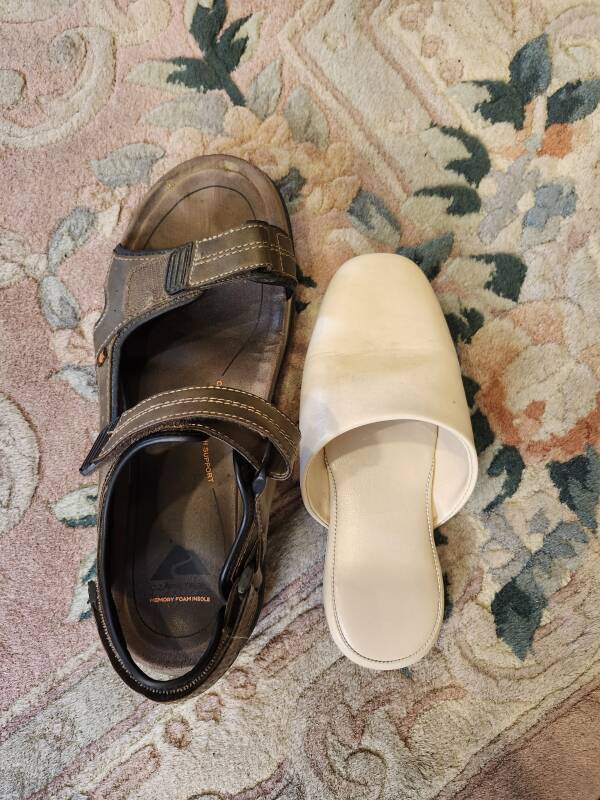
Bathroom Slippers in Japan
Which Slippers Do You Wear in Which Places?
As a visitor to Japan, you probably won't be in any private homes. But you will be staying overnight, and so you need to know how to behave in your lodging. This includes wearing the proper footwear in each area, including the bathrooms. The short version is that you don't wear outdoor shoes indoors, and there are special slippers for the toilet area. In more detail:
- When you enter into a stone or tile entryway, remove your outdoor shoes and change to slippers as you step onto wood or carpeted floors.
- There will be special slippers for the toilet area. Step out of your regular slippers and leave them just outside the door in the hallway, stepping into the toilet slippers.
- You go naked and barefoot into the bath.
- Step out of your slippers to step barefoot onto any floor covered with tatami mats, made from woven plant material.
Let's see some examples — including, of course, the toilets and baths.
Barefoot on the Tatami
Let's cover the most sensitive part first — you always walk barefoot on tatami.
Tatami are traditional flooring mats, roughly 0.9×1.8 meters in size. The most traditional have a rice straw core, but modern ones often use compressed wood chip boards or polystyrene foam sheets.
The cover uses hemp for the warp, running the long dimension, and soft rush for the weft running across. It's all plant material, meant to be walked on without any footwear.
Hallways with wood or carpeted floors call for slippers, tatami means barefoot.
At a Traditional Ryokan
VisitingMount Haguro
Mount Haguro is a pilgrimage destination in northern Honshū, Japan's largest island. I stayed at Tamokan, a ryokan or traditional inn. It's in Haguromachi Touge, the pilgrimage town at the mountain's base. There it is, on the right behind some trees, a short distance ahead from the bus stop.
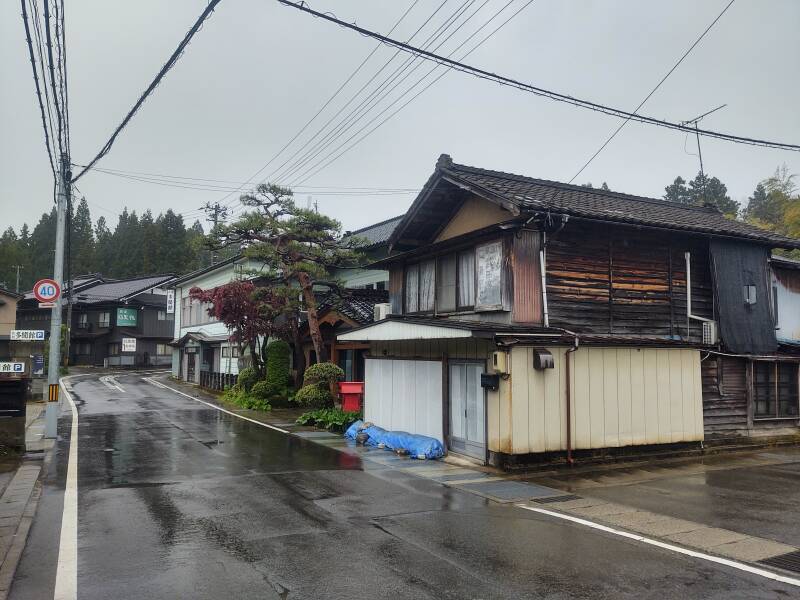

You step from the covered porch through the main door into a stone-floored entry area. There's a rack of slippers, and you step out of your outdoor shoes and into the slippers as you go up two steps onto the wooden floored hallway.
Here's the view down the upstairs hallway. My room is immediately to the left of this viewpoint. A large stainless steel pair of sinks was just outside my door, making it very convenient to get a drink of water in the night.
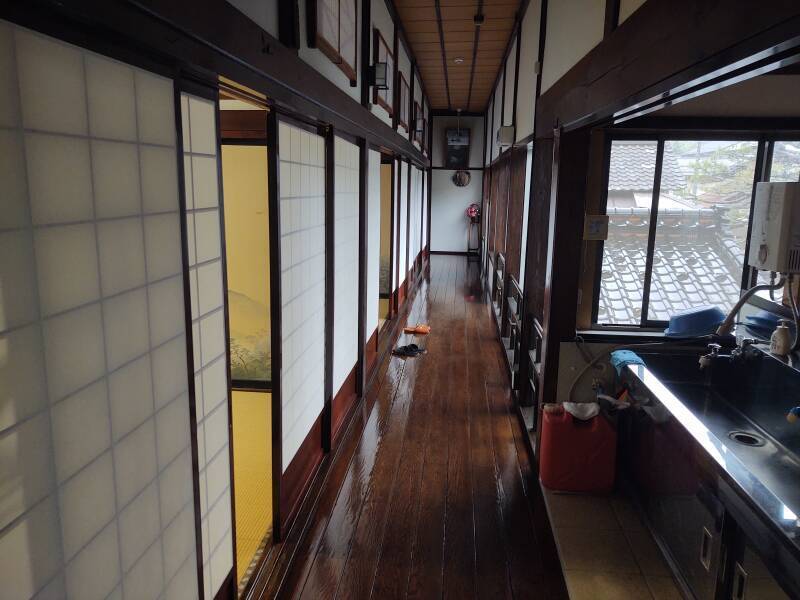
And, my very nice room:

A tatami floor, so the slippers stay on the wooden floor in the hallway.
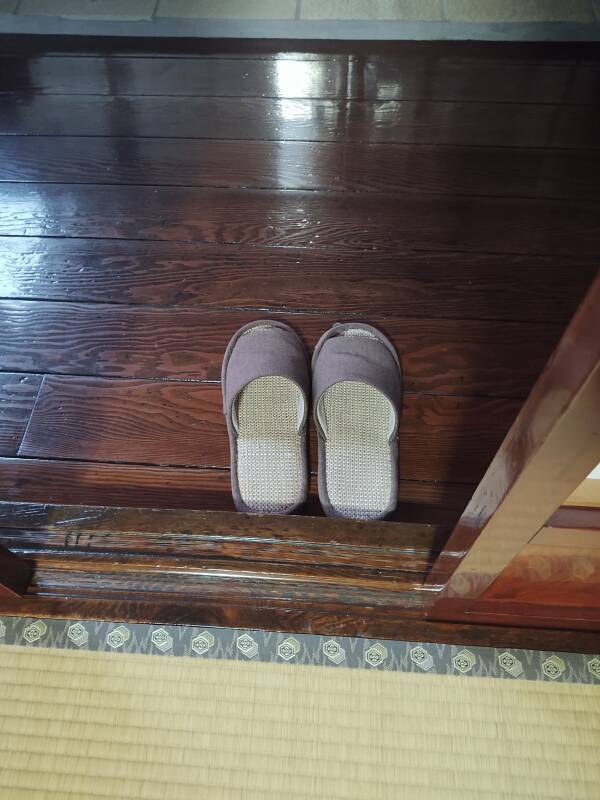
The rooms had shōji, walls and sliding doors made with paper panels. And Wi-Fi, so I could research what I would see in the area.

Breakfast and dinner were included. Step out of the room into the hallway slippers, go downstairs and to the dining room door, and step out of the slippers onto the tatami floor.

On another evening, you can see that I was wearing the provided yukata or lightweight kimono. Well, of course, as I had neglected to bring my own kimono. My pajama pants and T-shirt would have been acceptable, but when in Rome...
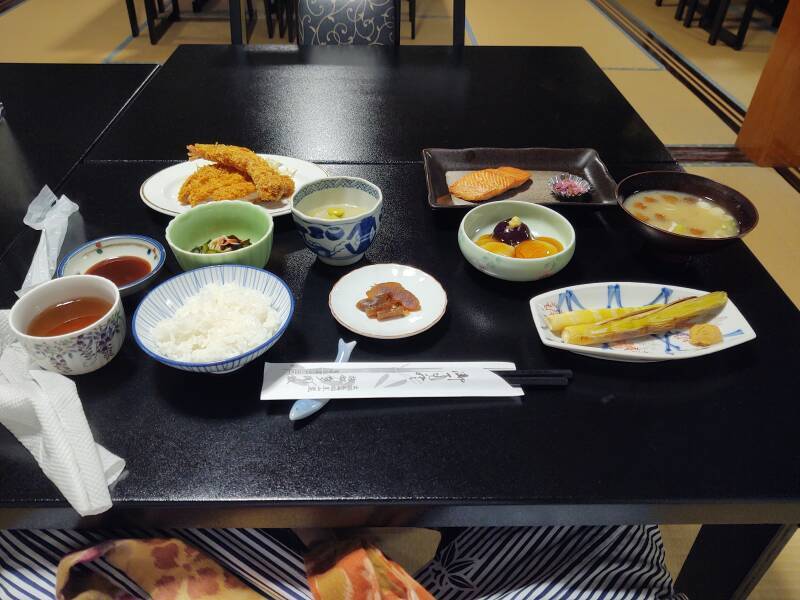
After dinner I would return to my room to find that the staff had moved the table to the side and laid out my futon for sleeping.
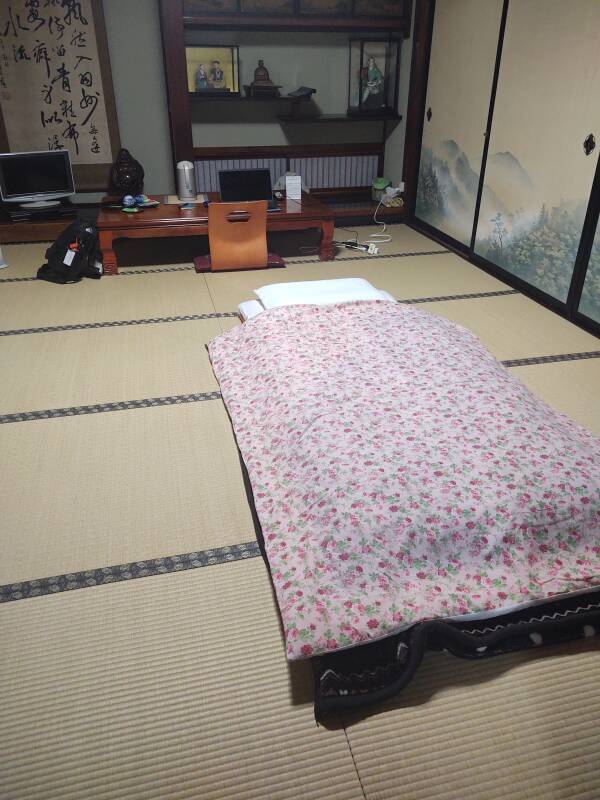
And now the main reason you're looking at this site, the toilet. There was one in a small room at each end of the hallway. It had a vinyl sheet floor, and there are the special toilet slippers. You leave your normal slippers on the wooden floor of the hallway as you step out of them and into the toilet slippers.
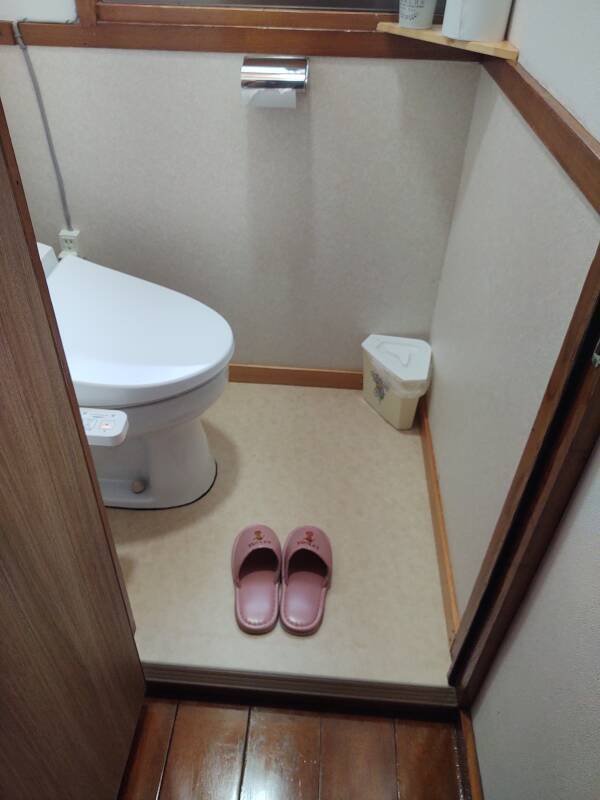

Of course the toilet had a heated seat and multi-function cleaning water attachments. See the collection of pages depicting Japanese toilets for details.
The toilet room had just a toilet. There's a small sink built into the top of the tank with a spout that pours water while the tank is filling. To more thoroughly wash your hands, go to the large sink by my room. But given the built-in water washing functions of the toilet seat, your hands shouldn't have gotten very dirty.
As for the bathroom, it's precisely that, a bath room. There's a tile-floored entryway with a rack of baskets. You remove your slippers, and all your clothes, and step into the bath room. There are three showers. Each has the standard Japanese system — one knob to adjust the temperature mix, another to adjust the flow to either the low faucet or the hose and shower head.
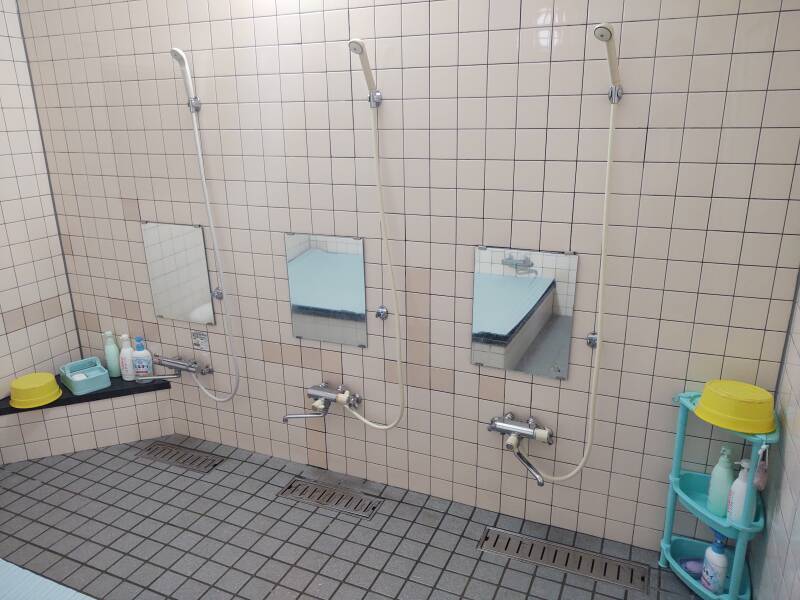
Why are the mirrors so low? Because it's expected that you will use one of the plastic stools to sit there during part of your shower.

Once you're fully clean, you can roll back the cover and get into the already filled tub. It's quite warm and deep, up to your chin. It makes for a nice soak after a day in the cool light rain trekking up to the shrine complex at the peak of Mount Haguro.
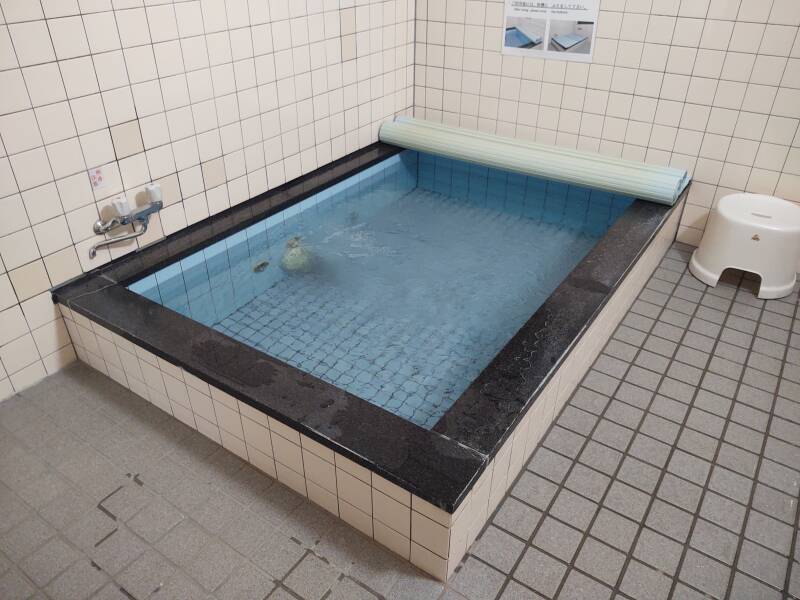
At a Modern Hotel
Let's move to a less traditional, but still distinctly Japanese, inn — the Seoul Garden hotel near the train station in Hakodate, on the large northern island of Hokkaido.
You enter the lobby on a tile floor. As you head toward the elevator, there is a step up onto a carpeted area with a cabinet for shoes. Take off your shoes, step onto the carpet, and open the compartment with your room number. Take out the slippers and store your shoes there. Put on the slippers, and take the elevator up to your floor.
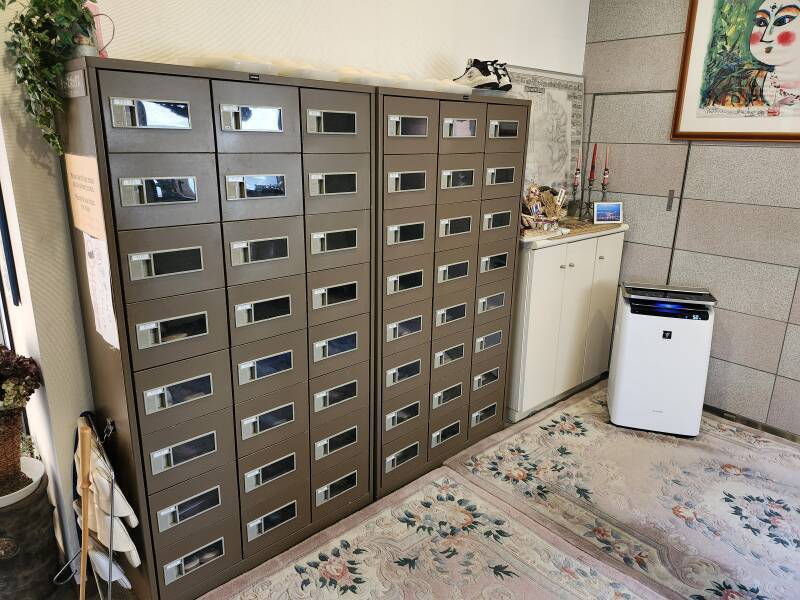
The hallways are carpeted, but the rooms have tatami floors.


The toilets and baths were shared in this hotel. There are toilet slippers you change into when stepping from the carpeted hallway onto the vinyl floored area with sinks and toilets.
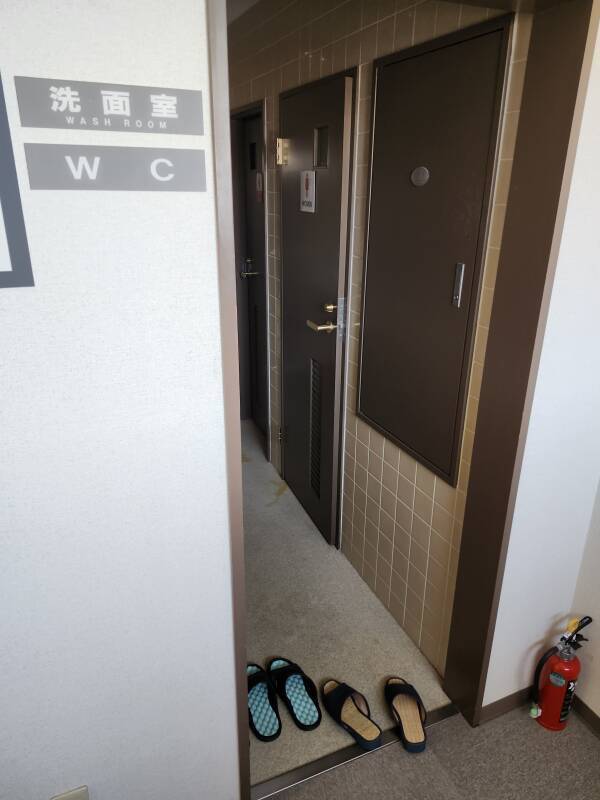
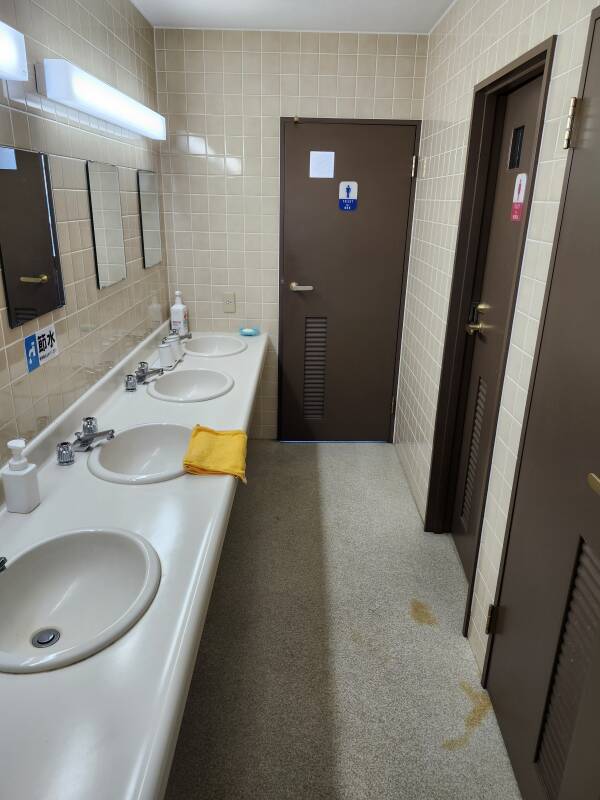
Women's toilets are to the right, men's are straight ahead past the sinks. For the men's:
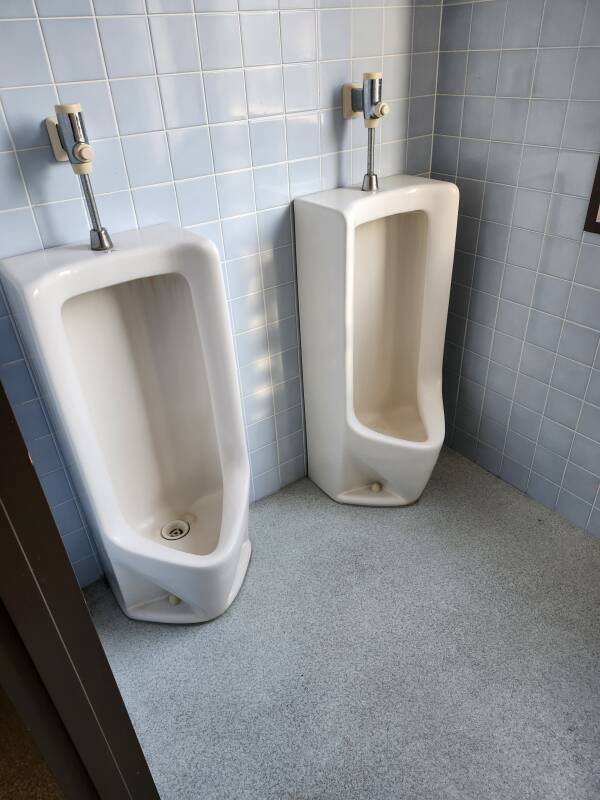
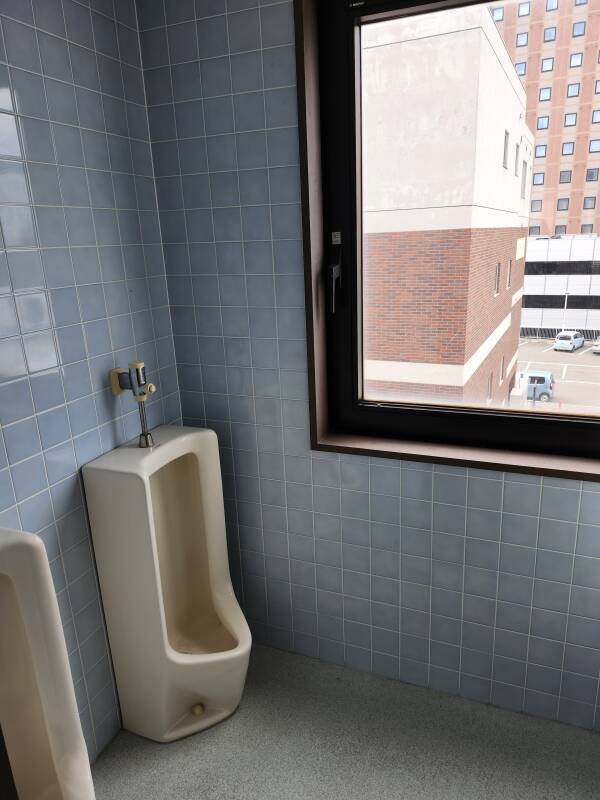
Yes, these urinals are featured on the Loos With Views page.
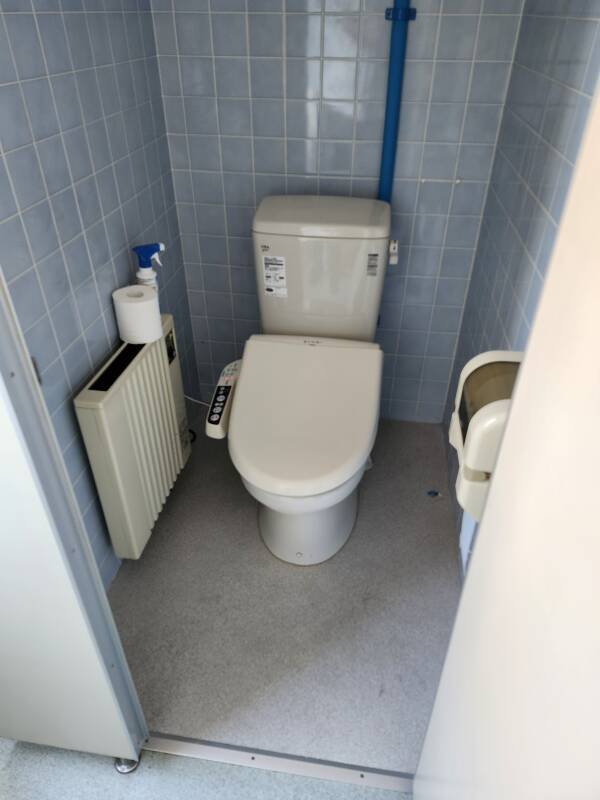
There are separate men's and women's bath rooms down the hall.
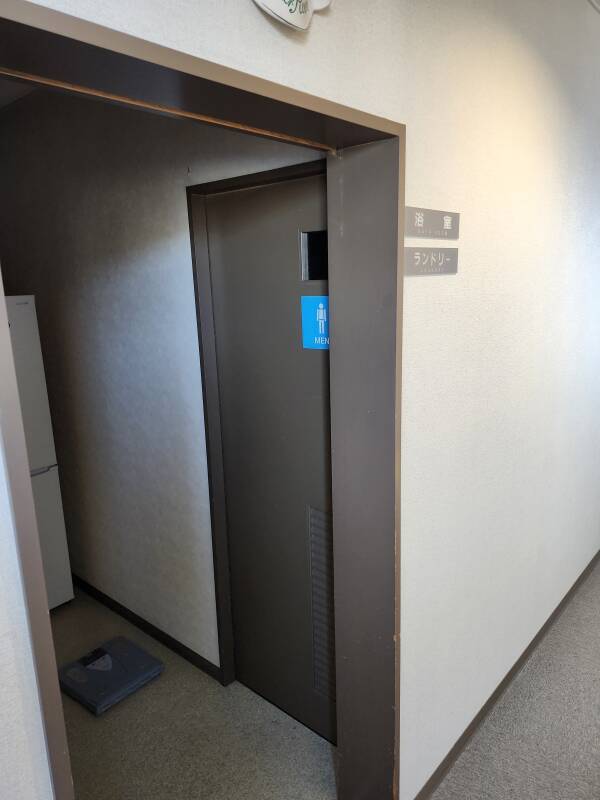
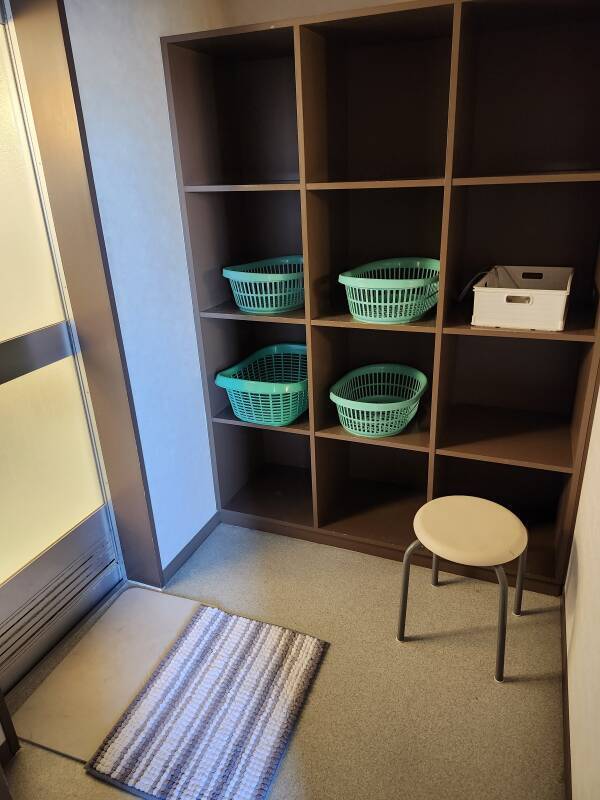
The bath is like the one at the ryokan at Mount Haguro, with a much smaller tub.

Things Change (Somewhat)
Younger generations are deciding which traditions to keep, and which to modify or discard. At the Otaru Tap House and Hostel in Otaru, on the north coast of Hokkaido, it still makes no sense for people to wear their outdoor shoes inside, tracking rainwater and mud all over the floors. You remove your shoes and put them in the rack.
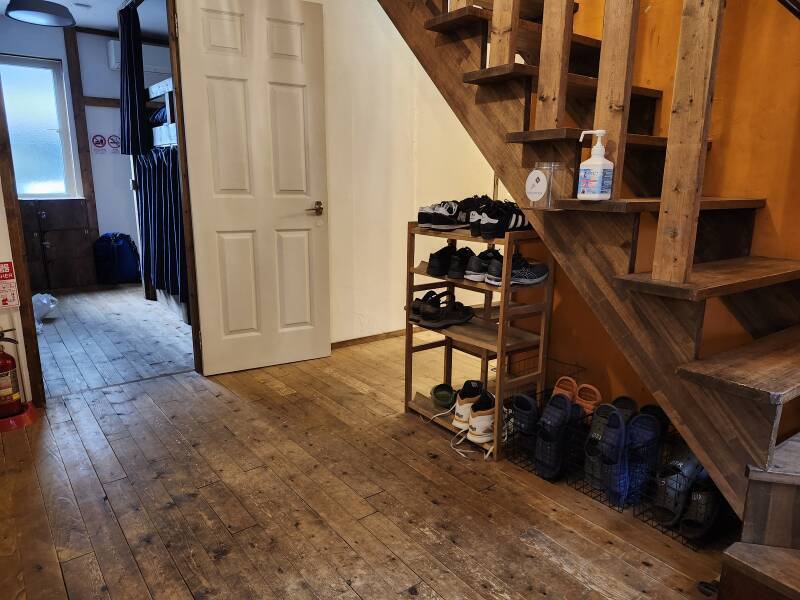
However, while slippers are provided, for the most part everyone goes barefoot or in socks everywhere indoors, including in the small toilet rooms.
They do provide a sign for foreign visitors, on the edge of the step up from the entry door onto the wooden floor.

Practical Matters
My kaiju-sized feet simply don't fit into Japanese hotel slippers.
At the ryokan I did everything with somewhat of a tip-toe shuffle in the appropriate slippers. However, the ryokan did have a range of sizes, none of them really large enough for me but their very largest ones were were not too bad.
Here's my footwear next to one of the single available size at the hotel in Hakodate. At the hotel I would wear the uniformly much-too-small slippers when moving between my room and the lobby, but then go barefoot up and down the hall and to the sinks and toilets. I noticed some of the other guests doing the same.
